It’s different here!
Actually, in most ways, it’s really just about the same. Humans are still human in all the ways; we live our lives juggling family, responsibility, work, daily duties and occupying the planet in the best way we know how. The differences I point out in this post are really just little things that, to me, are interesting. Some of the things are smarter ways of doing things that Americans haven’t yet adopted (or perhaps would be impossible to adopt because of how our systems are set up). I happen to believe the differences are just as beautiful as the similarities when looking at groups of people. Being curious is paramount – about cultures, countries, or entire races of people. Ultimately, that open-minded curiosity can lead to great things, including breaking down stereotypes, learning, and maybe even doing better. I admit that when I first encountered items from my long list below, I felt uncomfortable. But, over time it became easier and easier to adjust to new ways of doing things. Most of the things are small, but I have come to really appreciate them!
A Brief History – Did You Know?

Although anomalies in this post can apply to most of Europe, it is useful to have a basic understanding of Hungarian history in order to appreciate what the people here have endured over the years. The history is vastly different from what we as Americans have experienced in our brief 250 years as a nation, and as we know, a nation’s history informs the energy of a place. Some of the places we have visited are over 1,000 years old – including an arch-abbey in Pannonhalma that survived all of the following turmoil…
This region of Europe has been led by various groups since the original nomadic occupation of Hungary at the end of the 9th century. Shortly after, around the year 1050, it became a primarily Christian (Catholic) kingdom and different families of kings reigned for nearly 500 years, surviving Mongol invasions by building some of the fortresses and castles we can still visit today, including Buda Castle in Budapest and many of the smaller castles in the countryside we have visited.

Then, in the early 1526, the Ottoman Empire expanded into Hungary, and they were conquered. The Ottomans ruled Hungary for 160 years, amidst a governance by the nearby infamous Habsburg Kingdom in Austria. Throughout this tumultuous time, Hungarians rebelled against the Habsburgs and the Ottomans, until the latter was defeated by a broad coalition of allied forces in the second Battle of Buda in 1686. For the next 30 years, with the help of Austria, Hungarians fought for complete freedom from the Ottomans until they were finally removed from Ottoman rule in 1718. There are little hints from Turkish rule here and there around Hungary, including the giant mosque that has been converted to a Christian church, crowning the beautiful main square in Pécs. The most prominent nod to the time is the Turkish-Hungarian Friendship park in Zrínyi, on the southern border of Hungary.

Friendship at Zrínyi Park (google image)
The Austro-Hungarian Empire was fairly well established at this point, and the Austrian kings ruled the agrarian state of Hungary until the uprisings in 1848, leading to the Hungarian Revolutionary War of Independence and secession from Austria in 1849. Unfortunately this didn’t last, as Austria partnered with Soviet Russia to overwhelm Hungarian forces and just a few months later they were defeated. Still, the rebellion was heard loudly and clearly by Emperor Franz Josef and he made important concessions to Hungary. This is, in part, thanks to the convincing of Empress Elizabeth “Sisi” of Austria (the wife of Franz Josef), who had been crowned the Queen of Hungary and is still beloved today (side note, she was suspected of having an affair with a prominent leader in Hungary, Guylas Andrassy, while her husband took many concubines). If you want a terrific historical fiction story about this period in Hungarian history, read Accidental Empress by Allison Pataki.
It is known that Hungary found itself on the unlucky losing side of modern wars. During World War I, Hungary partnered with Austria and Germany to form the Central Powers, but they were eventually defeated in 1918 by the Western Front, and the Austro-Hungarian empire fell. Between the first and second world wars, the Hungarian Democratic Republic under the order of Count Károlyi, became a pacifist state and disarmed their armies. This opened them up to immediate vulnerability and defeat, and within 2 years Károlyi was forced to concede to military powers and resign. This is when the Hungarians went full communist and formed the Hungarian Soviet Republic and the Hungarian Red Army to defend and extend its borders.
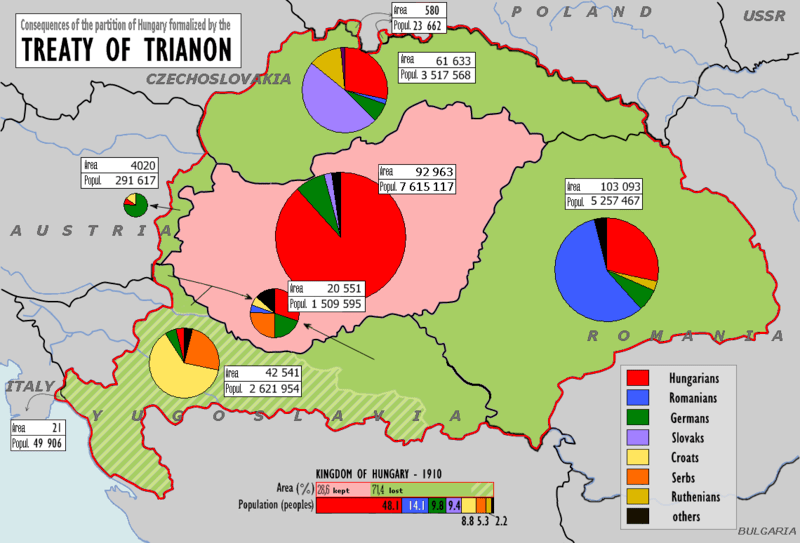
Again this was short lived (are you exhausted yet?) but the government, with its dying breath, enacted the Red Terror, a devastating move to murder several hundred respected scientists and intellectuals. As a result, a force of counter-revolutionaries (Conservative Royalists) fought back in a period known as the White Terror, where many of those communists were tortured and executed without trial. Over the 900 years of tumultuous rule, Hungarian borders were drawn and re-drawn many times. in 1920, in the Treaty of Trianon, Hungary lost nearly 2/3 of the land mass it had gained from neighboring Romania (mainly Transylvania), and the former Yugoslavia and Czechoslovakia. During this time, the scapegoat, like in Germany, became the Jews.
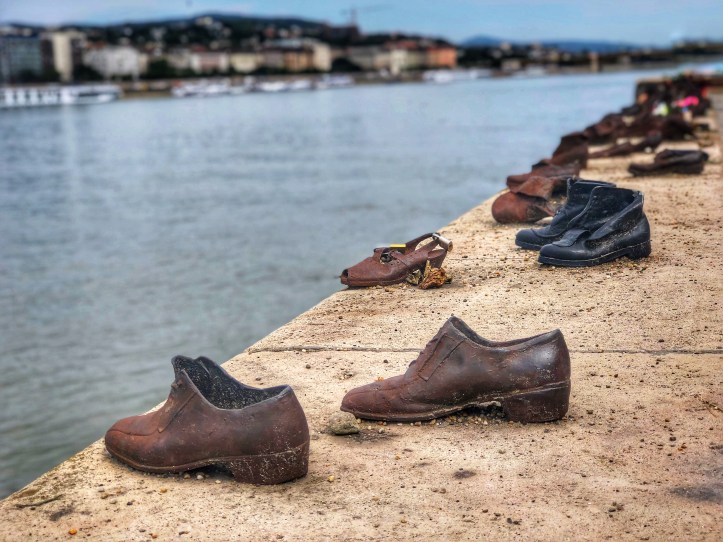
In 1929, the Great Depression issued in a new period of difficulty that led leadership to partner with Fascist Germany for goods and support. By 1938, Hungarians, although collaborating with Germany and Italy, refused to go to war against Poland and refused to allow Germans to pass through Hungary. In an unfortunate series of events (including a prime minister committing suicide in dismay when he couldn’t prevent joining war forces with Germany), the Hungarians eventually caved and fought with Germany at the front against the Soviet Union. During this time, a Nazi-sympathizer was thrust into power, and with the help of SS Colonel Adolf Eichman, they deported nearly 500,000 Jews enmasse to Auschwitz death camp in Poland. Every single Jewish person in Pápa was wiped out, and although the massive synagogue in town was defaced and badly damaged, it remains today as a ghostly reminder. During this time in Hungary’s history, mass murders were happening by fascist Hungarian Arrow Cross militiamen who collaborated with the Nazis, including the Jews now memorialized by the Shoes on the Danube in Budapest.
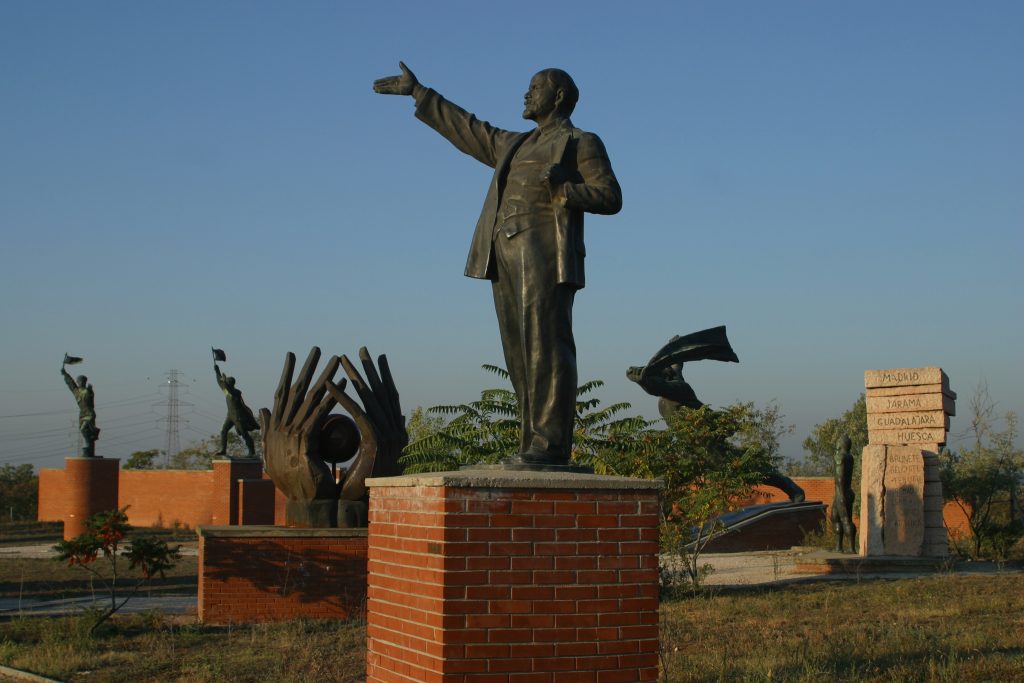
Eventually, at the end of World War II, they succumbed to the Soviet Red Army, and were forced to sign an armistice in Moscow after their surrender in 1945. For the next 44 years, Soviet forces aggressively enforced strict communist policies that were often bloody. In 1956, a now infamous group of students led a revolution that ended in a tank open firing on protesters. Although the insurgents were eventually defeated, the movement never fully died and gained steam all the way until Hungary finally gained its freedom from Russia after the fall of the Iron Curtain in 1989. [For the best depiction of the period of time surrounding the Hungarian revolution, read The Bridge at Andau by James Michener. It is incredibly brutal, but the truth – and excellent!] Today, only the propaganda (signs and statues) remain in a cemetery of sorts just outside the city of Budapest called Memento Park. It serves as a haunting reminder of the Cold War – may it never be repeated.
To make a long story short, Hungary was thrown around by surrounding regimes for hundreds of years, and it wasn’t until 1989 that they became a sovereign nation, and the Third Republic of Hungary convened at the Parliament building in Budapest. They have largely been a nationalistic, democratic socialist nation since then, with only 31 years under their belt as a country in the modern era. Interestingly, Viktor Orban, Hungary’s current president, has been in power for 14 of those 31 years. His main platform is a closed-borders policy to refugees and “dangerous outsiders,” as well as economic growth (sound familiar?) but in reality, only the top 20% of Hungarians have made any economic progress under his leadership. The rest of the population remains under the poverty level, and with such a massive senior population, they all have a clear memory of what it was like before Hungary was free.

I learned that living in a communist-occupied country means people have to mind their own business or risk being reported to authorities by a neighbor. Then, everyone was suspicious of everyone else – something I can still sense in the concerned eyes of the older generation of Hungarians today. I’m sure they’re thinking, “Why is that woman smiling at me?” In general, Hungarians aren’t warm and friendly, and hugging really isn’t a thing. Instead, they may kiss on the cheek for a greeting (also common in the rest of Europe). I’m sure it feels strange for many of the local people in Pápa, now living with people from something like 15 nations in their town, existing and working together cooperatively. Maybe they have flashbacks of their time under occupation, with strangers in their midst; I can understand if they feel uncomfortable sometimes. Their history explains a lot about their behavior.
That Said…
After all of that, the Hungarian people are extremely resilient. They are some of the hardest working people I know. Fanni is our family friend who also babysits, dog sits, and is generally our liaison in the community whenever I have questions. She holds several jobs, and rarely takes a break, even on weekends. I’m so impressed by the projects she takes on, and how she helps her family with everything from canning and jarring of the seasonal harvest to helping manage the family business. She is in her early twenties and gives me a pretty good perspective on how the young people here in Hungary feel about how things are being run (hint: many of them leave).
That leaves the population in Hungary an aging one. But that doesn’t stop them! The seniors in the community are the most impressive of the bunch! Little old grannies and grandpas ride their very crude bicycles all over town (never with a helmet) – something you’d never see in the states! Bicycle riding is popular here in general, but when it’s raining and you see a little old lady of about eighty riding one handed while holding an umbrella, you know they’re die-hard! Some of that vitality can be attributed to their thermal bath culture here (see blog for more info plus my list of thermals in Hungary), as evidenced by the swarms of seniors that can be found soaking regularly in the healing, warm mineral waters of the local Várkertfürdő.
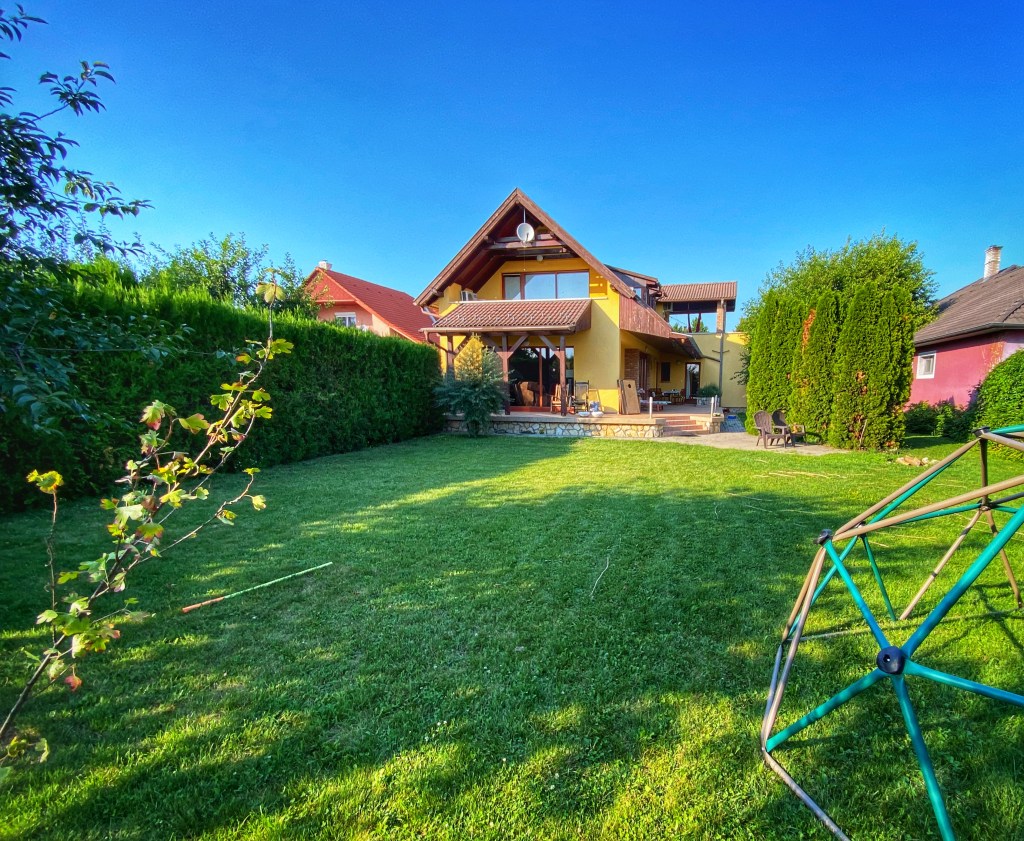
Homes in Hungary (especially in the small villages) are also a layover from communist occupation. All of the homes are close together and properties are entirely fenced or walled. Our home, as well as many others, have tiny bathrooms right at the entrance that were used for soldiers who would barge in and ask to use the toilet. Although I love big, wide-open space to spread out like a typical American, it has been nice to have a walled-in property – convenient for the kids and our pup. It feels cozy and private, even though one side of each house is basically the wall for the neighbor’s property. Most homes don’t have closets, and carpet is rare. We noticed that doors and windows are made to last – much higher quality than in the states. Kitchens are usually smaller, with smaller refrigerators and usually no microwave. But otherwise, it’s really quite similar to the states.
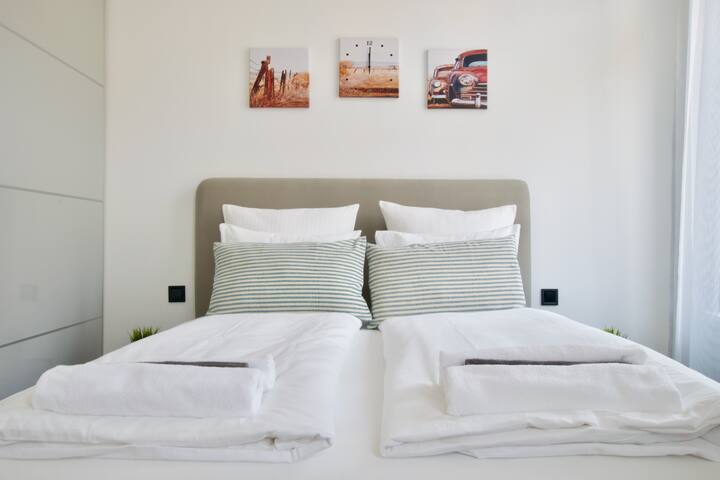
If you decide to stay at an Air BnB or local hotel (not international chain like Hilton), you will notice a few interesting things about how Hungarians (and Europeans in general) live. You’ll be hard pressed to find a wash cloth, the bath towels are usually tiny, and when you climb in bed, you’ll notice all you have is an individual duvet comforter and fitted sheet – no flat sheet! This was strange at first, but we have gotten used to it and even adopted this on our big American bed in the summer time. Although we do share one big comforter, it’s not a bad idea for each person to have their own! I remember seeing “Euro” size pillows at home stores in the US and just thought it was the name of them – but no, living here I have learned that those are the actual size of pillows used on most European beds. They’re always made of feathers, and they’re never fluffy enough. This is something that, in my opinion, we do well in the states – bedding!
But in the bathroom, Americans have yet to discover the bidet. Many European homes have them, including our very own at our house – that we use to wash our feet! Haha! Toilets are also different here, as they are designed in just the right way to leave a streak. [Insert awkward face] But they’ve remedied that by adding a little toilet scrubber right next to it, and you’re expected to clean up after yourself no matter where you are – in a public restroom, hotel, restaurant or in your own home. Thanks, Europe..? I do, however, love how clean public restrooms are, and how private the stalls are (walls usually reach all the way to the floor). This is because for most of them, adults are expected to pay a small fee – the equivalent of about 50¢ or less. I can get on board with that!
It’s hard to get on board with the paper products here in Europe, though. Paper towels, tissues and toilet paper basically disintegrate at the first sign of moisture – terrific for the environment and terrible for protecting your hands in the bathroom. If there’s one thing I miss (and snag whenever I have the chance) it’s Puffs tissues!
Road Rules
As I mentioned before, people here ride bicycles everywhere. Everyone is used to them on the road, and they usually treat them with respect even though there aren’t many designated biking lanes. It is good that most drivers are paying attention, because none of the bikers wear helmets. This makes our family (and most expat families) stand out! We, too, ride bicycles often (Willow learned to ride in her first months here at age 3!), and one of my very favorite past times here was going out on a bicycle date at night. We would ride to a restaurant, then follow it with a movie at the theater, and then ride home under the light of the moon. It was the best feeling! Of course we haven’t been able to do this all year with Covid restrictions and the theater closed down, but I hope we can do it again someday.
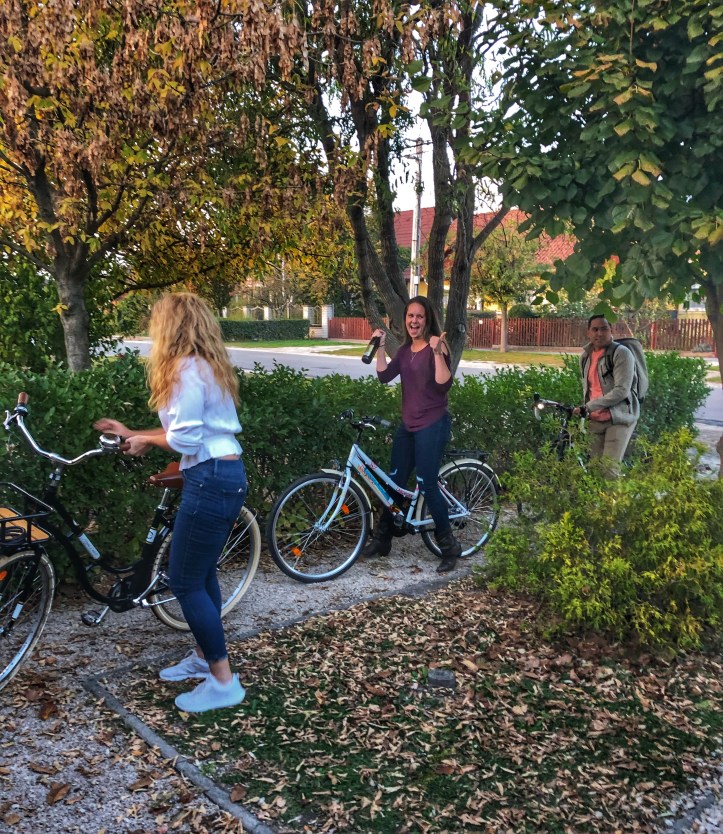
Speaking of date nights, we usually don’t go out for drinks after the movies because driving a car OR riding a bike has a zero tolerance policy. Many people take the risk of riding bikes when they know there will be alcohol served, but most people won’t take the risk of driving in Hungary, even if they’ve only had one drink. We took full advantage of the popularity of bikes in Europe and participated in the Swedish Bike Party the first year we were here. So fun! It was a lot like a progressive dinner, where you wouldn’t know who would be hosting you next or who would be arriving at your house! Of course this year’s bike party was cancelled; thanks, Covid.
On the roads you’ll see different cars than in America. The Dacia, Citroen, Alfa Romeo, Pugeot, Renault and Opal join the higher end European cars like the VW, BMW, Mercedes, Audi and Volvo. These cars are usually very small. Because the roads are so narrow here compared to the states and gas is much more expensive (filling up our van with “petrol” costs around $85 here but more like $50-$60 in the states), people tend to buy smaller, more fuel efficient cars. Our big Honda Odyssey and our fellow Americans with huge SUVs and trucks stick out like sore thumbs. Speaking of gas, Europeans know that gas is called petrol because it is a liquid, and not a gas! *wink*
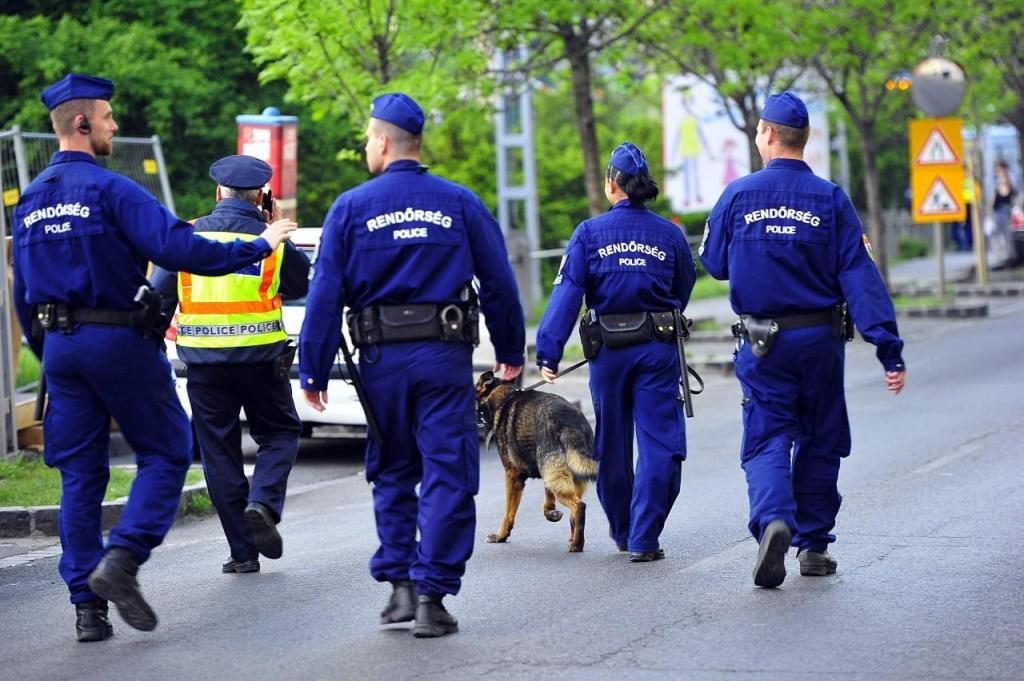
Police here are friendly, not menacing or intimidating. We occasionally see them on the highways or driving through town, but they’re not exactly on patrol. This is surprising to me, given the history of Hungary. I would expect them to be much more militant. The only time we had a “run-in” with police is when an officer rang our doorbell at 2AM (in the first few weeks we were in our house), and in broken English, explained he drove by and saw our van door was open, and he couldn’t close it (the battery had died) so he wanted us to know. A courtesy call! HA! Imagine! Needless to say it was very sweet and generous, but I was also like, “please don’t ever do that again.” I couldn’t relax the rest of the night after being awakened by police! Only a couple of people in our community have been pulled over by Magyar Rendőrség (Hungarian Police) – instead, Hungary and many neighboring countries utilize speed cameras. Thanks to them, we received our fair share of speeding tickets early on, delivered to us in the mail. Lesson learned! The highways also use a vignette system instead of tolls, where we purchase a sticker (for a week, a month or a year) that serves as a pass for the highways. Scanners check cars as they speed past and if you don’t have a vignette, guess what? You’ll get fine in the mail. Thanks, Hungary! I actually like this system. It makes traveling easier.
Most driving and highway rules are the same, except I have noticed there are WAY more roundabouts at intersections than traffic lights. I have come to love the roundabout. I don’t, however, love the “wait your turn” rule. This is where a person waiting to turn left at an intersection has to wait until ALL drivers who are going straight have crossed. Everyone else has the right of way until someone across from you is turning left, a nice person waves you through (usually if theres a big jam up of cars behind you) or no cars remain. I have become a regular “waver” of people to turn in front of me because I just can’t justify going if the car across from me has been waiting and waiting and waiting and waiting….

While you’re waiting for your turn to turn, you might be lucky enough to spot one of the animals Hungary is famous for. The stork makes its home high up in enormous nests perched atop telephone poles on platforms the country has installed for them. Storks are one of my favorite animals that mark the change of the seasons. They arrive in spring, pick out a nest (or build one) and lay their eggs, and soon cute baby storks begin to peek their little heads out from the edge of the nests. In the fields they can be seen with their long legs and pointy beaks looking for food to feed their babies. Storks are also super cool because they are known to mate for life, returning to the same nest year after year.
Also famous in Hungary are the hawks. One of our favorite past times on road trips is counting the hawks we see and having a little competition. It is also common to see deer, rabbits, foxes, and the occasional hedgehog, a beloved animal in Hungary. Moles are also common (although you will never see them, only their little mounds of soil), as are small ferrets, which are elusive but known to be trouble for cars if they climb up underneath to get warm and chew on the wiring. Many people here put big, clear bottles of water behind their cars at night to deter the ferrets from sneaking inside and doing damage to their vehicles. Imagine!

Something you won’t see here is squirrels. There are hardly any – I haven’t seen a single one since we have arrived. However, the massive stag beetle is definitely an interesting creature that shows up periodically on trees. It is also unusual to see people walking large dogs. My fellow American friend Meryl has two huge dogs, and when they first went out for a walk in town after arriving here, she noticed people quickly crossing the street and giving her fearful glances thinking they must be guard dogs – when they are really the sweetest pups ever! Here, most large dogs are used for protection behind those walled homes I mentioned earlier, and most of them live right outside all year long. It’s sad if you ask me. Instead, Hungarians see smaller dog breeds as “pets” who live inside with them, and the majority of the “pet” breeds are so well trained that they usually go for walks with their owners off leash! This is something that blows my mind every time I see it. Such obedience!
Norms
We learned right away that Europeans have adopted a more socially conscious series of norms. For example when shopping, you insert a coin into the cart for use, and retrieve the coin upon returning it to the cache. Brilliant! I remember doing this at Aldi in Delaware and feeling really annoyed when I didn’t have a quarter handy for a cart…but when this is a norm, you’ll be sure to always have a coin handy! Additionally, if you don’t bring your own reusable bags, you’ll be expected to cart items out in hand or buy a bag at checkout. You only forget bags once before learning that lesson…
When going to the gym or when dropping kids off at daycare or school, you are expected to bring “indoor shoes“. Out of courtesy, indoor shoes keep indoor spaces clean. What a novel idea! At the gym this amounts to a clean pair of sneakers, and for the kids this can mean slippers, slide-on shoes or clean shoes to wear for the day.
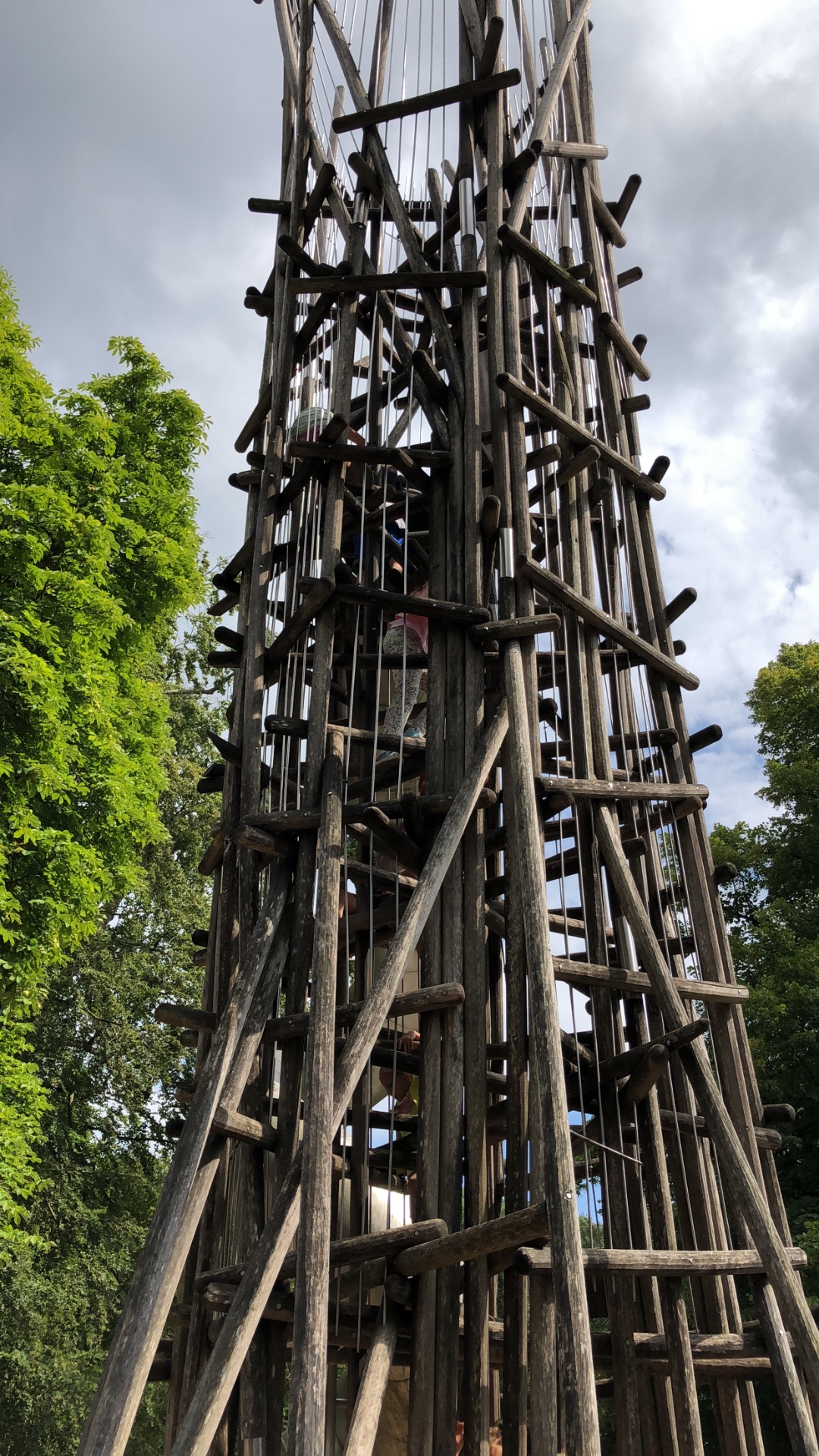


Children in Hungary (and Europe) also have much riskier playgrounds than in the states. Above are playgrounds from Munich and Nuremberg in Germany, both with amazing designs and very high apparatuses. The kids had a BLAST on them of course, but all I could do was hold my breath the whole time, imagining someone getting hurt – as we Americans are trained to do. But here in Europe, parents aren’t as worried about this, because they have universal healthcare to take care of any bumps and bruises. Cities who put up these playgrounds also don’t worry about being sued because a culture of litigation doesn’t exist here – that is exclusive to America. Here, kids take turns, and often help each other on these playgrounds, learning valuable skills about taking healthy risks and teamwork. Although my initial reaction was fear when I encountered these playgrounds at first, I soon learned to embrace these amazing places for kids to be kids and learn without removing the necessary risks of childhood. Bravo, Europe!

Europe is known for its lack of modesty. Now that we have been living here for over 2.5 years, whenever we are at a swimming hole and the kids need to get changed into their swimsuits, they don’t miss a beat. They know we live in Europe, and here it is totally normal – even expected – that adults and children alike can change right at the beach. It is so funny to see that people go to the beach in regular clothes, then gracefully change into a swimsuit, and then change back into their clothes or a dry swimsuit when they’re ready to leave. How about that!? We just go to swim wearing our swim suits and cover ups, and then sometimes change into dry undies and clothes when we leave. The kids have learned all of this by seeing all ages of people drop trou or go au-naturale at lakes and Adriatic beaches; and although we aren’t quite to that level of indiscretion yet, we don’t worry too much about flashing a butt cheek every now and then. Babies are usually naked, boys frequently wear speedo-type swimwear, little girls wear just bikini bottoms (their moms might be doing the same), and most grandmas and grandpas are sporting a bikini and speedo, too! At a proper pool or thermal there won’t be nudity, but the locker rooms are usually unisex, with separate stalls for changing. There is also a wide range of riské swim attire, with plenty of skin showing no matter what the body type! This is unusual for Americans, but I have grown to really appreciate the laissez-faire attitude that lets everyone just be themselves and feel comfortable in their own skin. A lot can be said for that! It’s also pretty funny that this extends to peeing on the side of the road. It is totally normal to see people pulled over peeing, as it isn’t seen as a big deal here. If you gotta go, you gotta go! And nobody is going to arrest you for indecent exposure.
Swimming in Lake Balaton (the largest lake in central Europe) and visits to thermals are popular in Hungary of course, and they are famous for water polo, too. They are also well known for circus-acrobatics, and the girls have been enjoying their aerial arts classes for the past year. They work on the silks and the aerial hoops, and they both have shown real progress in the sport! Our little town in Pápa has at least 3 traveling circuses throughout the year. Although we have yet to attend, they are quite popular!
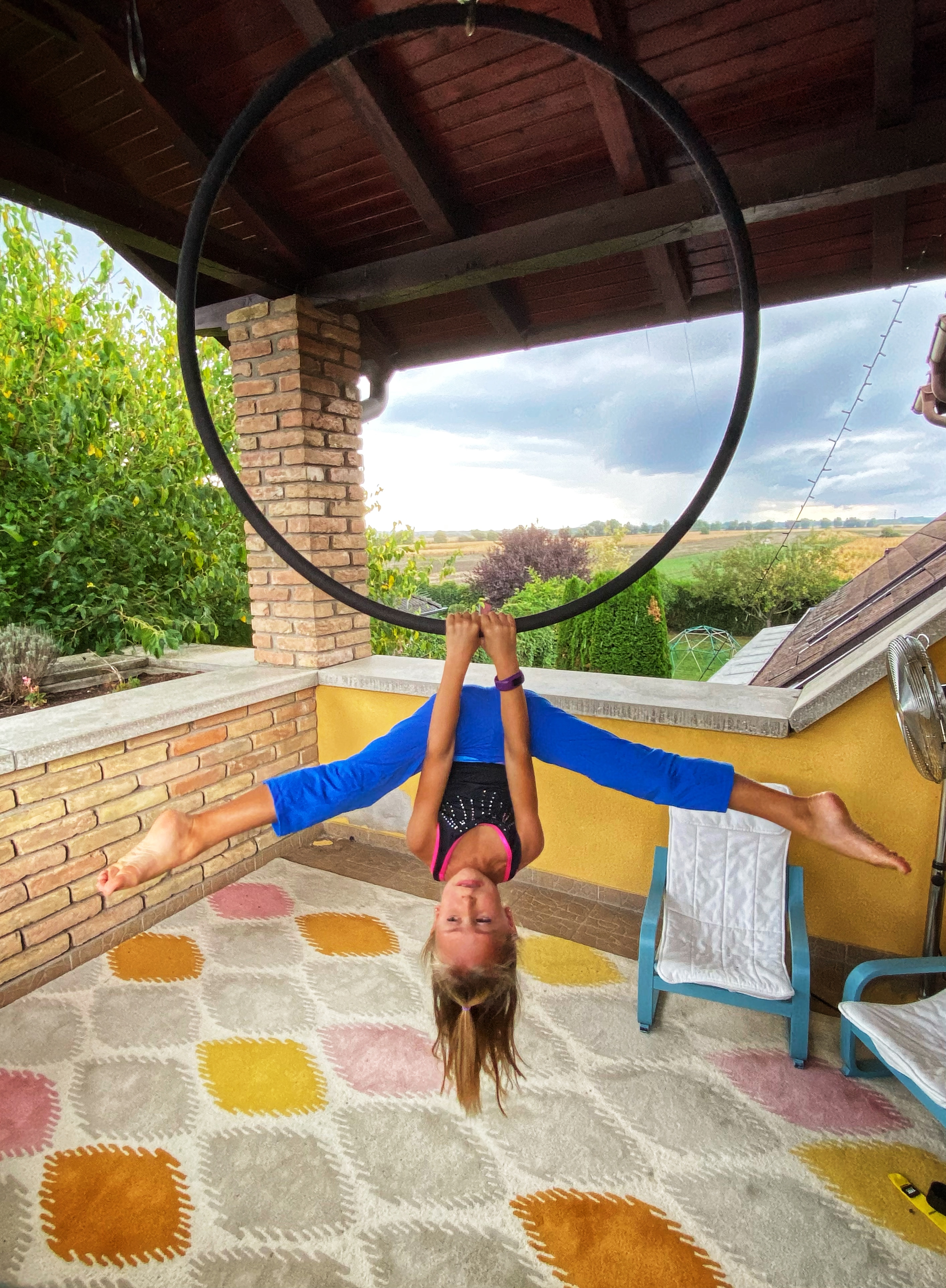
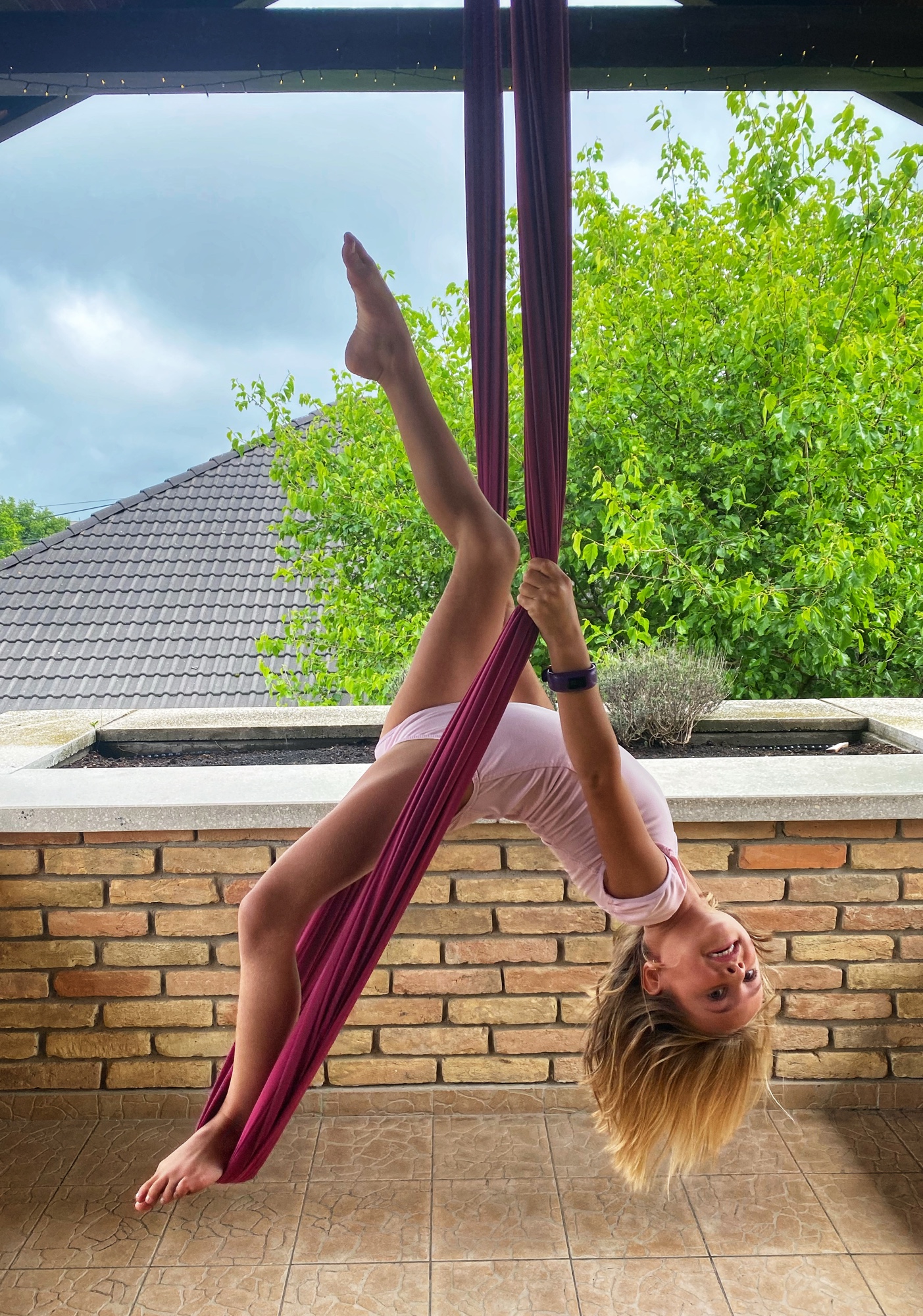
The last thing I have noticed culturally is something that I would love to see celebrated in the states. Women’s Day is a big deal here and all over Europe in the spring in early March. It is common to see men checking out at grocery stores with bouquets of flowers, and you may even be a lucky lady to receive a little flower to pin on at the checkout. It is a very special holiday here – even bigger than Mother’s Day. I always look forward to the smiling faces and the extra care and focus given to women’s issues on this holiday. For a traditional, “family values” country like Hungary, it sure is nice to see celebrating women.
Food & Drugs
On one hand, European culture allows for kids to be kids and take healthy risks on these playgrounds. On the other hand, they have other areas where there are way more regulations. For instance, the only thing you can get here in a drug store to help you with an ailment are cough drops, vitamins and holistic remedies. In America you can go in a drug store, grocery store or super store and enter an entire aisle with various pain medications, as well as “night time” versions of these drugs and just about any allergy, cold or flu remedy, including Sudafed or other very strong substances. This is pretty convenient in the states, but I can see how it can also lead to problems. Here you need to have a prescription for things as simple as an OTC pain medication like Aleve, Advil or Tylenol. That is why Americans stock up when passing through military bases or on missions when it comes to all the OTC stuff. A good tip for traveling, too! It is good to know that Apothecaries and Pharmacies are everywhere – tiny shops all over town, just look for the glowing green plus sign – and if you need help with an ailment you can just go in and ask a pharmacist.

These regulations extend to cosmetics and their food supply, too. Here in Europe, over 1,300 chemicals have been banned in cosmetics, where in America, only 11 have been banned. Basically that means that the products here are cleaner and more natural than back home in the states. Similarly, certain food dyes, food additives and chemicals have been banned including drugs for animals. This means the food in grocery stores are much cleaner and fresher, but they do “go bad” quicker. This leads to people shopping more often (for less) so they have ingredients for just a few days at a time. I have gotten used to this and quite like my fresh breads from the bakery, fresh veggies and fruits from the market and meats that I know have been farmed humanely. This is also why, when you buy orange flavored Tic-Tacs in Europe, the plastic container may be orange but the tic tac inside is white! The red and yellow dyes are banned here. Think about that… (More info here.)

Another amazing thing about Europe is that you can count on ice cream and gelato just about everywhere. This is the good stuff, too – not the crappy “dairy dessert” found in the states. This is real ice cream and gelato with simple ingredients and it is cheap and to die for. This is one thing that I instantly embraced as we dubbed our outings “gelato vacations” and would be sure to sample a treat every place we visited!

With ice cream and gelato everywhere, it seems all of Europe is a playground! The truth is, it is a much more welcoming place for children and families in public spaces than in America. We noticed this right away, especially at restaurants. Here in Hungary the food is so affordable that we enjoy eating out fairly regularly, several times per month. When you can feed your hungry family of five at a delicious sit-down restaurant for $25-$30, why not? Restaurants are all family-friendly, as many of them have little areas inside for children to color or play with toys, or even playgrounds outside. My favorite thing is letting the kids enjoy a nearby playground in the square as we relax and wait for dinner at an al-fresco restaurant. I just can’t help but think, “this is the life.” I never feel like our active kiddos have to act perfectly to be accepted at an establishment, and we never feel rushed or judged. That’s another great feature at restaurants here – since tipping isn’t expected like in the states and employees are paid fair wages, nobody is rushing to turn over tables and hurry you out for the next guests. We can stay and relax as long as we want. It’s the best! It is important to remember, however, to request the check, because nobody will just bring it. That would be considered rude here!
A reminder whenever you’re at a restaurant here is that Europeans don’t generally have ice in their drinks. You might get lucky ordering a lemonade, but don’t expect ice as a general rule. What you will get if you order water, is fizzy water. So, be sure to indicate “with gas” or “without gas” if you prefer still water. And also expect to pay for it in bottled form unless you can communicate you just want water from the tap. Sometimes, in Europe, it’s cheaper to just buy a beer. HA! Be careful when ordering a pizza, as it may have corn or cauliflower on it if you ask for veggies, or some other unusual ingredient. Corn is a common ingredient they’ll often just throw on random food, like a tuna salad sandwich or a mixed salad. Pickled salads are also quite common and are great for digestion!

I love sending Beau to the bakery for me on his bike, now that he is old enough to run errands and he seems to enjoy helping. Bakeries are very popular – and they are everywhere. You can buy a giant, fresh loaf of bread for around $1.25. There are also pastries and other goodies at the bakery, but you will notice that sweets are generally less sweet. People here are accustomed to less sugar in general than we are in the states. At first that is an adjustment, but overall, less sugar isn’t a bad thing to get used to. Hungarian children love to eat tiny little rolls for a snack. It’s so cute! Hungary is known for ground poppy in their pastries that can easily be mistaken for chocolate (watch out!) and in general, it is difficult to find a really good, moist, delicious cake like you can find in the states. Even cookies just aren’t the same. But who needs all of that when you can just go have another gelato? Candies and chocolates are different here too, and although you might notice a familiar brand like KitKat or Snickers, it usually tastes different because of those banned chemicals. All those carcinogens sure make the food taste better. *wink wink* It is fun to try local treats too, like anything by Kinder is yummy! And how would you like to try the Balaton Bumm (above)? It’s named after Hungary’s infamous Lake Balaton!

Something I love about living here are the colorful fields that mark the changing seasons. First come the yellow rapeseed fields, then the red poppies, then the yellow sunflowers and purple lavender fields. Rapeseed is processed into oil (like American canola oil), poppies into seeds, sunflowers into oil (also used in cosmetics), and lavender into every product imaginable. Hungary is known for these farmed products, including their peppers for paprika and vineyards that produce world famous Hungarian wines.
In all seriousness, this long list is only scratching the surface. I haven’t tapped into the structural and systemic differences like how a fairly poor country like Hungary prioritizes health care, nursery, daycare, preschool and education for all. Hungary has a fairly primitive medical system compared to surrounding countries, but medical tourism is still popular because services are so affordable. Many American expats have elective cosmetic surgeries at a fraction of the price! I was able to bring Bonsai to the vet to have about six teeth removed during a cleaning and it only cost me around $50. Don’t get me wrong – Hungary is far from the perfect model for America, but no single country is. In comparison, Hungary is about the size of Pennsylvania, with a population of less than 10 million (that’s 2 million less than Pennsylvania!). When you have such a small space and population to work with, people are more likely to be a cohesive unit. Hungary didn’t have trouble with people cooperating with mandates and recommendations during Covid because here, people care about their neighbor and do whatever is necessary to stay safe. The bottom line is, we should continue to study how other countries are doing things well so we can learn how to do things better in our own country. It starts with being curious! And getting out of our comfort zones.
AWESOME POST!!!! I could identify with and visualize so much of it. ♥️
On Sat, Sep 26, 2020 at 3:38 PM Home Base Hungary wrote:
> > > > > > > Brí posted: ” > It’s different here! > > > > Actually, in most ways, it’s really just about the same. Humans are still > human in all the ways; we live our lives juggling family, responsibility, > work, daily duties and occupying the planet in the best way we know how. > The diffe” > > > >
LikeLiked by 1 person
Beautiful, just beautiful! Thanks Bri❤.
LikeLiked by 1 person
💜
I have really missed all those wonderful snaps……but your blogs are stunning!♡
LikeLiked by 1 person
Love this!
We also adopted the two duvet covers style!
LikeLiked by 1 person
Your observations are spot on. A fascinating read because those differences you have experienced….I have too. I can’t help but make comparisons ….foods, bedding, dealing with Covid etc made me smile that you have observed these things too. I love Hungary and it’s “cleaner” way of life 🙂
LikeLiked by 1 person
Simpler living for sure!! Thanks for the kind words, Sue! 🙂
LikeLiked by 1 person
Thanks so much for sharing your observations of life in Hungary! The changes in the last 30 years are quite amazing. We visit Budapest every 5 years, but your daily life there is quite another experience. You might enjoy the story of our life in Budapest during the communist years when we were probably about your age with our 9 year old son.
budapestjournal.wordpress.com The photos will show how much things have changed for the better. It’s nice to read your positive comments about life in the countryside and love your many wonderful photos!
LikeLiked by 1 person
Wow! Thank you for sharing! I have read several books about life for my neighbors during those years and it sure explains a lot. Thanks for the kind words! 🙂 Yes, things have changed a lot – but I think folks here (especially the younger generation) would say there is still a long way to go/grow. I’ll be following along closely in the coming years to see how things continue to evolve!
LikeLike